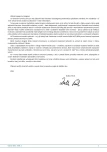Virulent profile and resistance of Escherichia coli isolated in immunocompromised patients with urosepsis
Authors:
M. Kmeťová; E. Kendrovská; V. Takáčová; M. Sabol; L. Siegfried
Published in:
Urol List 2012; 10(4): 37-40
Overview
We have been studying the characteristics of E. coli strains isolated from blood of immunocompromised patients suffering from urosepsis. In each patient (n = 25) a different strain has been tested. In the tested strains we have most often found gene adherence fimA (96%) and pap (56%). From the genes coding toxin production we have found cnf (20%), α-hly (16%), lt (12%), and st (8%) in our set of strains. The incidence of aer and iucC genes supporting the survival of E. coli in host extracellular space and associated with Fe2+ utilization was 84% and 80%, respectively. From the phylogenetic perspective the studied E. coli strains most often belon-ged to phylogenetic groups B2 and D (53% and 32%, respectively). The highest resistance against antibacterial agents we have found against trimethoprim/sulfamethoxazol and ciprofloxacin (32%) and against ampicillin/ /sulbaktam (20%). All the strains were sensitive to piperacillin/tazobactam, colistin, amikacin and meropenem.
Key words:
Escherichia coli - urosepsis - virulence - resistance - phylogenetic group
Sources
1. Wiles TJ, Kulesus RR, Mulvey MA. Origins and virulence mechanisms of uropathogenic Escherichia coli. Exp Molec Pathol 2008; 85(1): 11–19.
2. Jadhav S, Hussain A, Devi S et al. Phylogenetic and genomic diversity of human bacteremic Escherichia coli strains. BMC Genomics 2008; 9: 560–574.
3. Nataro JP, Kaper JB. Diarrheagenic Escherichia coli. Clin Microbiol Rew 2008; 11(1): 142–201.
4. Brzuszkiewicz E, Thürmer A, Schuldes J et al. Genome sequence analyses of two isolates from the recent Escherichia coli outbreak in Germany reveal the emergence of a new pathotype: Entero-Aggregative-Haemorrhagic Escherichia coli (EAHEC). Arch Microbiol 2011; 193(12): 883–889.
5. Oliveira FA, Paludo KS, Arend LN et al. Virulence characteristics and antimicrobial susceptibility of uropathogenic Escherichia coli strains. Genet Mol Res 2011; 10(4): 4114–4125.
6. Li G, Kariyawasam S, Tivendale KA et al. tkt1, located on a novel pathogenicity island, is prevalent in avian and human extraintestinal pathogenic Escherichia coli. BMC Microbiology 2012; 12: 51–69.
7. Ananias M, Yano T. Serogroups and virulence genotypes of septicaemic E. coli. Brazilian J Med Biol Res 2008; 41(10): 877-883.
8. Kmeťová M, Frankovičová L, Molokáčová M et al. Molekulárno-biologický dôkaz faktorov virulencie a fylogenetických skupín u klinických izolátov Escherichia coli. Zborník príspevkov. Využitie experimentálnych metód pri ochrane a podpore zdravia obyvateľstva, Košice 2010: 241–245.
9. Siegfried L, Kmeťová M. Role of virulence factors in pathogenesis of Escherichia coli infections. Biologia 1997; 52(6): 697–705.
10. Gudiol C, Calatayud L, Garcia-Vidal C et al. Virulence Plasmid Harbored by Uropathogenic Escherichia coli Functions in Acute Stages of Pathogenesis. Infect Immun 2010; 78(4): 1457–1467.
11. Hilali F, Ruimy R, Saulnier P et al. Prevalence of Virulence Genes and Clonality in Escherichia coli Strains That Cause Bacteremia in Cancer Patients. Infect Immun 2000; 68(7): 3983–3889.
12. Köhler DC, Dobrindt U. What defines extraintestinal pathogenic Escherichia coli? Internat J Med Microbiol 2011; 3(1): 642–647.
13. Kmeťová M, Havrišová K, Sabol M et al. Escherichia coli strains isolated from patients with Crohn’s disease and ulcerative colitis. Biologia 2005; 60: 717–721.
14. Čurová K, Kmeťová M, Sabol M et al. Enterovirulent E. coli in inflammatory and noninflamma-tory bowel diseases. Folia Microbiol 2009; 54(1): 81–86.
15. Clermont O, Bonacorsi S, Bingen E. Rapid and simple determination of the Escherichia coli phylogenetic group. Appl Environ Microbiol 2000; 66(10): 4555–4558.
16. Mokady D, Gophna U, Ron E. Virulence factors of septicemic Escherichia coli strains. Internat J Med Microbiol 2005; 295(6–7): 455–462.
17. Worth L, Slavin MA. Bloodstream infections in haematology: Risks and new challenges for prevention. Blood Reviews 2009; 23(3): 113–122.
18. Jaureguy F, Landreau L, Passet V et al. Phylogenetic and genomic diversity of human bacteremic Escherichia coli strains. BMC Genomics 2008; 9: 560–574.
19. Kmeťová M, Frankovičová L, Molokačová M et al. Resistance to antibiotics, phylogeny group and virulence genes in Escherichia coli isolated from blood in critically diseased patients. 7 th World Congress of the Pediatric Infectious Diseases (WSPID), Melbourne, Australia 2011, 782.
20. Cooke NM, Smith SG, Kelleher M et al. Major Differences Exist in Frequencies of Virulence Factors and Multidrug Resistance between Community and Nosocomial Escherichia coli Bloodstream Isolates. J Clin Microbiol 2010; 48(4): 1099–1104.
21. Kmeťová M, Frankovičová L, Hrabovský V et al. Vplyv probiotík na virulenciu E. coli izolovaných pri ulceróznej kolitíde. Správy klin mikrobiol 2011; XI: 2–10.
22. Beerepoot MAJ, den Heijer CDJ, Penders J et al. Predictive value of Escherichia coli susceptibility in strains causing asymptomatic bacteriuria for women with recurrent symptomatic urinary tract infections receiving prophylaxis. Clin Microbiol Infect 2012; 18: E84–E90.
Labels
Paediatric urologist UrologyArticle was published in
Urological Journal

2012 Issue 4
Most read in this issue
- Adverse events of hormone replacement testosterone therapy
- Testicular adenomatoid tumor – diagnosis and operating procedures
- Vaporizace prostaty pomocí zeleného laseru (GreenLight laser) – zkušenost z jednoho centra po provedení více než 1 000 výkonů
- Development of surgical retrieval a men's sperm with azoospemia
